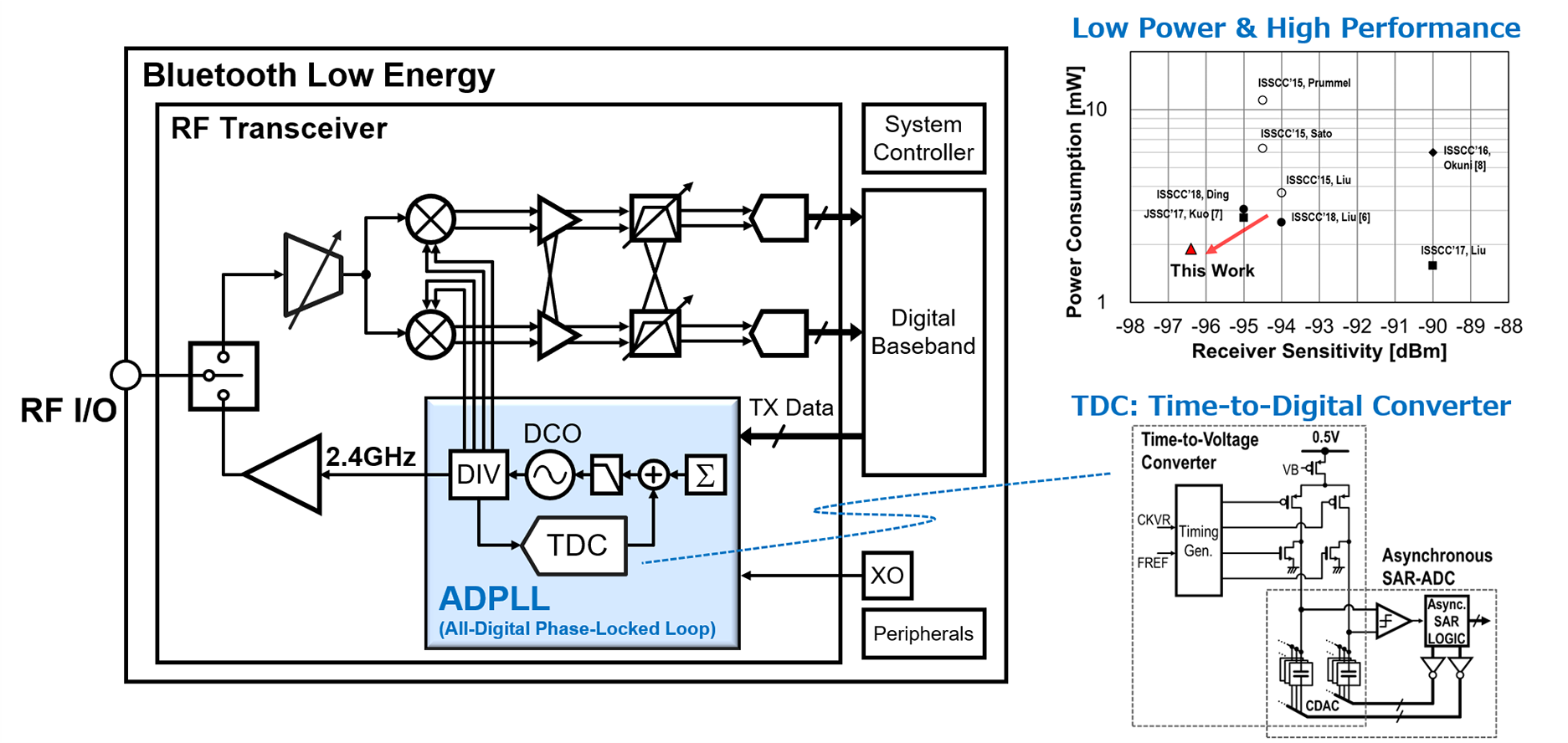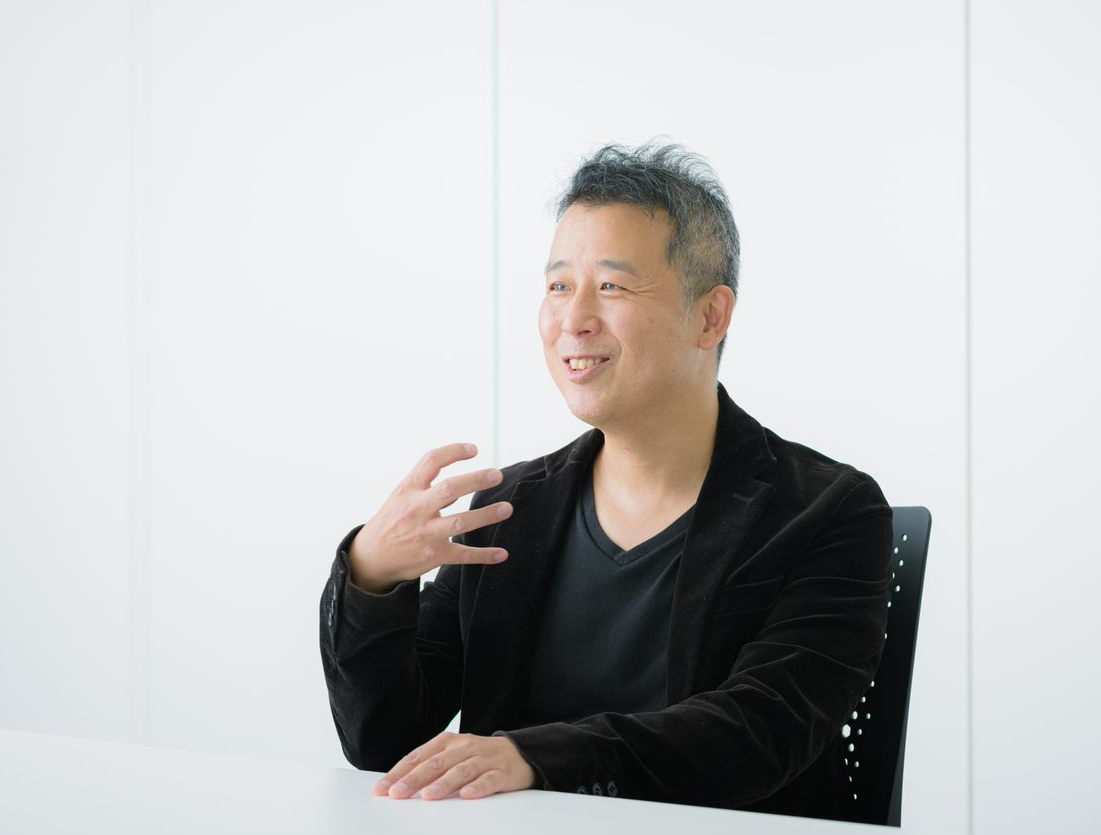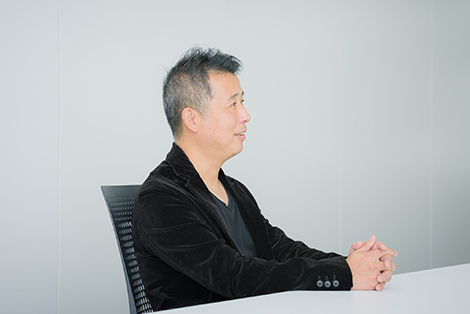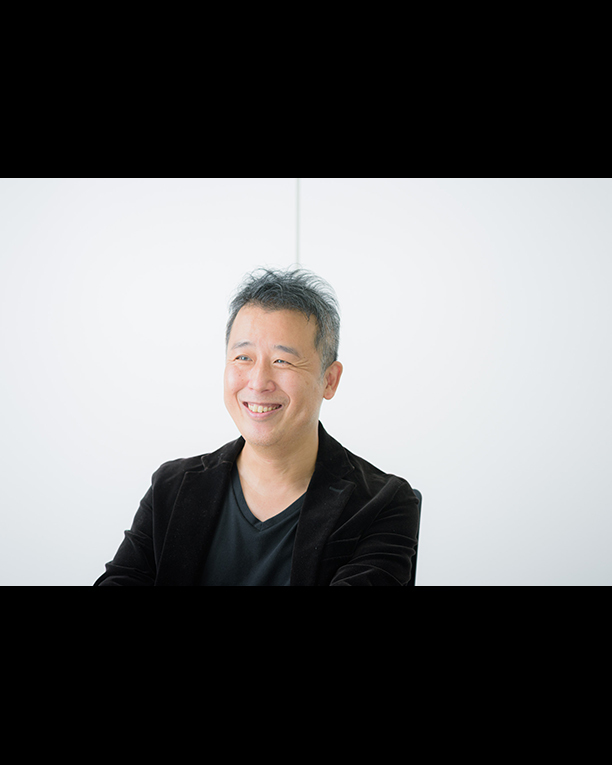STORY
Employee Development
Realizing a new clock generation circuit with high energy efficiency and enhanced capabilities!
A story of an engineer who succeeded both in the development and his family life
December 5,2022
Clock generation circuits are implemented in many devices, including TVs, personal computers, smartphones, and sensors. A clock, which the circuit generates, is essential for almost all electronic devices. For example, it controls the operating frequency of a CPU for data processing, expressed in GHz (gigahertz). They are also implemented in most semiconductors developed by Sony Semiconductor Solutions Corporation (SSS). Despite being one of the crucial blocks, the clock generation circuits were for a long time left behind in the digital evolution. We interviewed Masahisa Tamura, an engineer who overcame the difficulties with analog PLLs (phase-locked loop) and developed a new clock generation architecture. This is the All-Digital Phase-Locked Loop (ADPLL), which achieves low voltage operation, small area, and high performance. He received Sony Outstanding Engineer Award 2020*1 for this development. We asked him about his key that kept him going to bring about new technology while being on a reduced working hours for nursing care scheme.
*1) The Sony Group’s most prestigious award program that recognizes individual engineers for their remarkable contributions in order to inspire engineers to take on new challenges.
Masahisa Tamura
Sony Semiconductor Solutions Corporation
Research Division 1
Profile: Joined Sony Corporation in 2001, Tamura initially was involved in the development of radio frequency IC for mobile phones, especially on the receiver circuit. He then joined the project to develop LSI compatible with TransferJet in 2008 and developed phase-locked loops. He also started working on the development of the all-digital phase-locked loops around the same period and brought his project successfully to mass production in 2014. In 2020, the technology was successfully applied to the ultra-low power consumption transceiver for Bluetooth® Low Energy, and Tamura presented a paper at an international conference. The technology is expanding the scope of its application in various LSI products today. He pursues the internal rollout of the technology as well as the development of next-generation technology.
No progress in digital technology is possible without the support of the analog technology
Clock generation circuits, for which Tamura has developed a new architecture, may not be recognized readily in our everyday life, but are blocks required in semiconductors and electronic circuit boards embedded virtually in all electrical and electronic appliances. These devices operate based on a signal that indicates the operational timing (clock signal), and the clock frequency signifies how many clock signals are generated every second. The clock generation circuit generates the signals and controls the clock at a certain frequency. If your PC’s CPU is marked the clock frequency of 1 GHz, it means that the clock signal oscillates 1 billion times per second.
Today, diverse devices in the world are becoming smaller with muti functions, which necessitates semiconductors to be smaller as well as designed with various circuits to enhance their capabilities. Meanwhile, the clock generation circuits remain in their analog state, not keeping up with the downsizing trend. In advanced semiconductor processes, the circuits are more prone to breakdowns at the conventional high voltages. It is necessary to have circuits that can operate at low voltages, and for this reason, there was a growing need for reviewing the circuit designs, especially the analog one for the clock generation architecture. It was also logical that a digital circuit would be more suitable for fabrication in the advanced semiconductor processes.
However, it is not as simple as it is said. The clock frequency is determined by an oscillator, which itself is a pure analog circuit, and it is difficult to convert this to a digital circuit. Meanwhile, the feedback component responsible for monitoring the output signals of the oscillator can be digitally converted. Tamura’s award-winning technology leveraged this point and created a ground-breaking new clock generation architecture that combined digital and analog circuits.

Illustration
Zoom

Tamura says, “No progress in digital technology is possible without the support of analog technology.” Take smartphones for example. They are one of the most advanced digital devices, but when we make a call, the voice is converted into digital data, which are then converted into analog electromagnetic waves to be transmitted from the phone’s antenna. At the receiving end, the receiver circuit amplifies the weak analog signals, removing the noise, to enhance the communication quality. Contrary to the general view that analog technology is inferior, which is simply not true, the analog technology is playing an important role in supporting digital technology. It is therefore striking a good balance between the analog and digital technologies that is important.
A thorny path for the development project—no ideas about what was causing the defect
Tamura first became interested in the idea of a digital-based clock generation architecture around 2008. Research papers on digital architectures had been published since 2000, but he was initially quite indifferent to these “complicated circuits.” However, the advancement in semiconductor manufacturing processes made him gradually aware of the necessity and potential of digital circuits. Tamura had a timely opportunity to make a prototype. He put his idea of digital circuits in a new architecture, but the result was a miserable failure. He could only manage to make the clock generator function under very limited conditions. He was even unable to identify the cause of the defects. His experiments continued without much success. People at Sony are very keen on new technology. The news about his attempt traveled quickly across the company and soon caught some imaginations. He was given an offer “to incorporate the technology into the next-generation LSI product,” drawing commercialization into the project’s objectives. The problem was obvious—the technology was not fully established yet. This commercialization project thus had a troublesome start.
The first project had a demanding requirement, that the clock generator functions at numerous clock frequencies. This posed an insurmountable challenge to Tamura, whose prototype was barely functional after many trials and errors. The first prototype did not work at more frequencies than it did. A team was immediately drawn to analyze and resolve the defect. It was Tamura’s first ever experience in a highly driven project environment for commercialization. He was more accustomed to the headquarters lab, and the pressure for a success was incomparable to the more familiar situation where he would pursue research by himself. “Everyone so often asked how I was doing. Looking back, it was because they were really passionate about making this technology work. But at the time, it meant nothing other than more pressure put on me, as I was out of my depths,” he recalls with a sense of humor.

“There were three issues to address in the development of the new clock generation architecture. Firstly, there were no known methods to design a high-speed circuit that combined analog and digital circuits. We had to start from developing the method. Secondly, the analog clock frequencies were variable, unlike standard digital circuits. Thirdly, I was on a reduced working hours scheme, which I will come back to later. What I did was to manage the overall project. I organized the issues into digital and analog problems, and these were referred to specialists of either type of circuit for finding solutions. When specific problems developed out of these efforts, I asked someone who was knowledgeable in relevant areas for help. In this way, I had support from so many people and finally made it to a product that could be commercialized. The award I received is given to me personally, but it is for me an award that recognizes the team effort. I am sure that I could not have done it without the support of the team and of the company.” Another successful outcome came out of his limited time at work due to being on the flexible work hours scheme. It necessitated that the work was distributed among the team members, resulting in everyone familiarizing with the technology, forming the Company’s technological asset. This style of development project is beneficial not only for businesses but also young engineers for having easy access to technology and information. It has left a legacy that technological innovation does not choose engineers’ working styles.
Striking a good balance between hobbies and studies as a student
Tamura successfully established the technology that combined digital and analog circuits, and it was his ability to organize issues into digital and analog domains and distribute tasks to those who were better equipped to handle them that made this unrivaled technology possible. He has always been talented in making judgments quickly and managing himself well between different tasks. When he was a student, Tamura was into the drums. He played in a student jazz group, pop band group, and also a big band outside school. He did not stop playing music even when he started studying at graduate school. His professor praised him with a hint of sarcasm that “he was the most efficient student in writing up his dissertation.” While most students dedicated their time to research, Tamura continued pursuing his studies and passion for music, dividing time cleverly between the two. He was happy making time and efforts for what he enjoyed doing, and his ability to switch flexibly between his hobbies and studies enabled him to accomplish both of them, not having to give up one or the other.

Household chores are a means to reset the mindset Dealing with family life and work as a single father
Tamura was working short hours, as it has been mentioned earlier. This was because he had a gravely ill wife at home and, during the second half of the development project, had to support two daughters, a teenager and one of pre-school age, as a single father. When his wife was taken ill, Tamura was unsure if he had what it took both to look after his wife and pursue the project at work. However, his boss and his colleagues of the development team responded by making arrangements to lighten his responsibilities. He was also helped by his understanding family and friends so that he did not have to give up his career. When we asked him about his secrets to strike a good balance between his family and work, he said, “The most important thing is not to bottle up all the problems you have. SSS has a culture that people willingly lend a helping hand to someone who cries out for support. I had various colleagues who helped me with the technological challenges I faced in the development project. It was with the support of my boss and the team, not to mention the Company’s support system, that I was able to manage things while being on the flexible work hours.” He also says that it is important to make the best use of the time while being away from the work desk. So, he was always mindful to be well-organized so that, if he had 10 minutes to spare, he could use it to prepare some documents. He has gradually found a balance between his family and work. Today, he can even use household chores to reset the at-work mindset.
As for the future, he says, “It is important to have technology ready whenever it is required. To stay in the technological development, I need to be aware of the latest trend in the development by keeping eye on the academic conferences and papers as well as by maintaining close communication with my colleagues.” The market needs are never static, and we cannot be manufacturing the same products forever. Meanwhile, if you wait for the market demand to rise, it is already too late to start the product development. Lastly, he said, “SSS has so many excellent engineers. The Company’s strength is in these engineers having various technologies under their belts so that its human and technological capacities are enriched and our quest for new technology continues. There are many brilliant ideas in the Company if not super-successful in terms of businesses. Even if these ideas for technology haven’t made to a limelight, we should keep pursuing them.” In his words, there were truths about the Company’s high potential as an organization that allowed SSS to maintain so many world’s No. 1 technologies.





